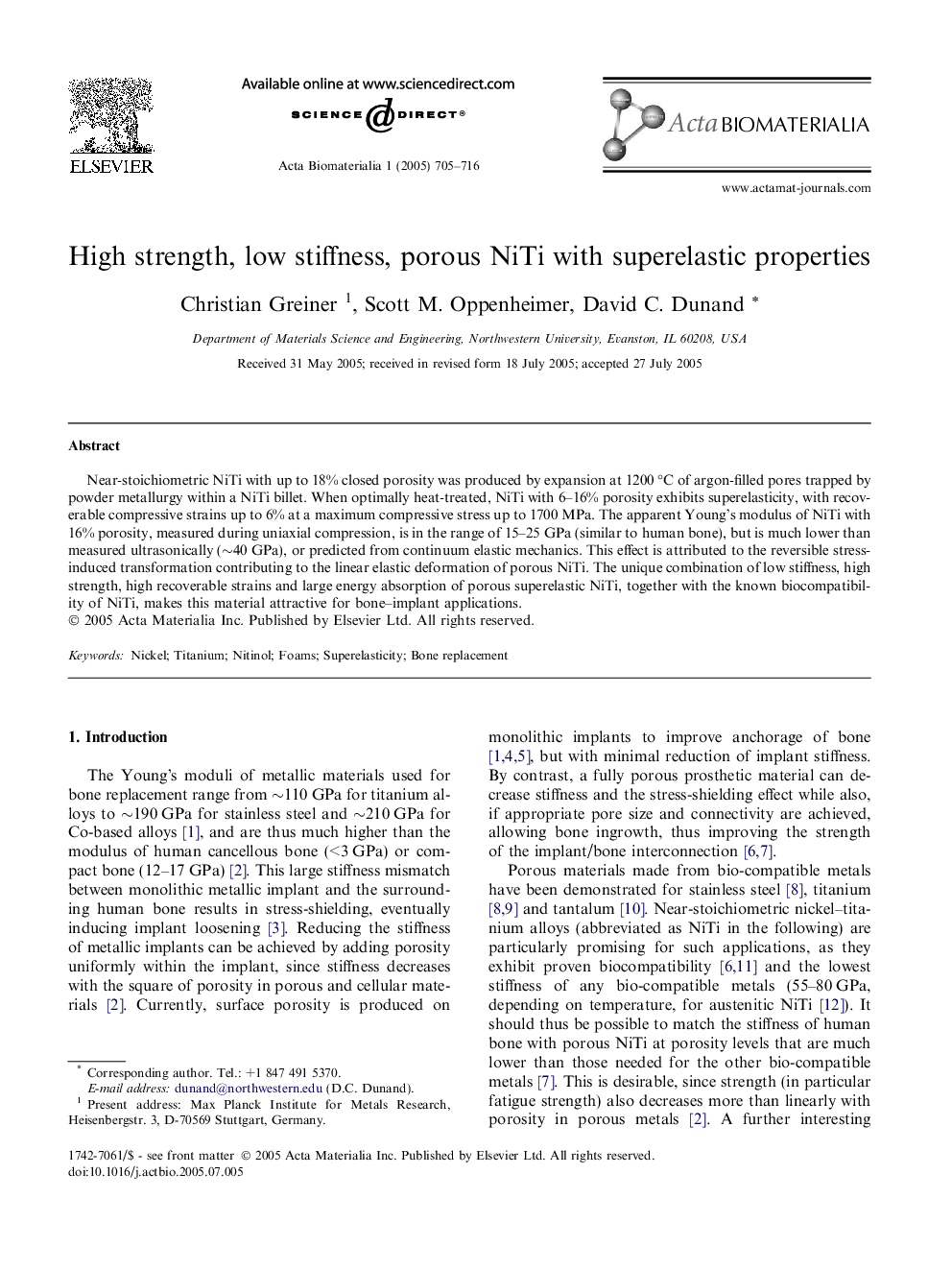| Article ID | Journal | Published Year | Pages | File Type |
|---|---|---|---|---|
| 10160469 | Acta Biomaterialia | 2005 | 12 Pages |
Abstract
Near-stoichiometric NiTi with up to 18% closed porosity was produced by expansion at 1200 °C of argon-filled pores trapped by powder metallurgy within a NiTi billet. When optimally heat-treated, NiTi with 6-16% porosity exhibits superelasticity, with recoverable compressive strains up to 6% at a maximum compressive stress up to 1700 MPa. The apparent Young's modulus of NiTi with 16% porosity, measured during uniaxial compression, is in the range of 15-25 GPa (similar to human bone), but is much lower than measured ultrasonically (â¼40 GPa), or predicted from continuum elastic mechanics. This effect is attributed to the reversible stress-induced transformation contributing to the linear elastic deformation of porous NiTi. The unique combination of low stiffness, high strength, high recoverable strains and large energy absorption of porous superelastic NiTi, together with the known biocompatibility of NiTi, makes this material attractive for bone-implant applications.
Related Topics
Physical Sciences and Engineering
Chemical Engineering
Bioengineering
Authors
Christian Greiner, Scott M. Oppenheimer, David C. Dunand,
